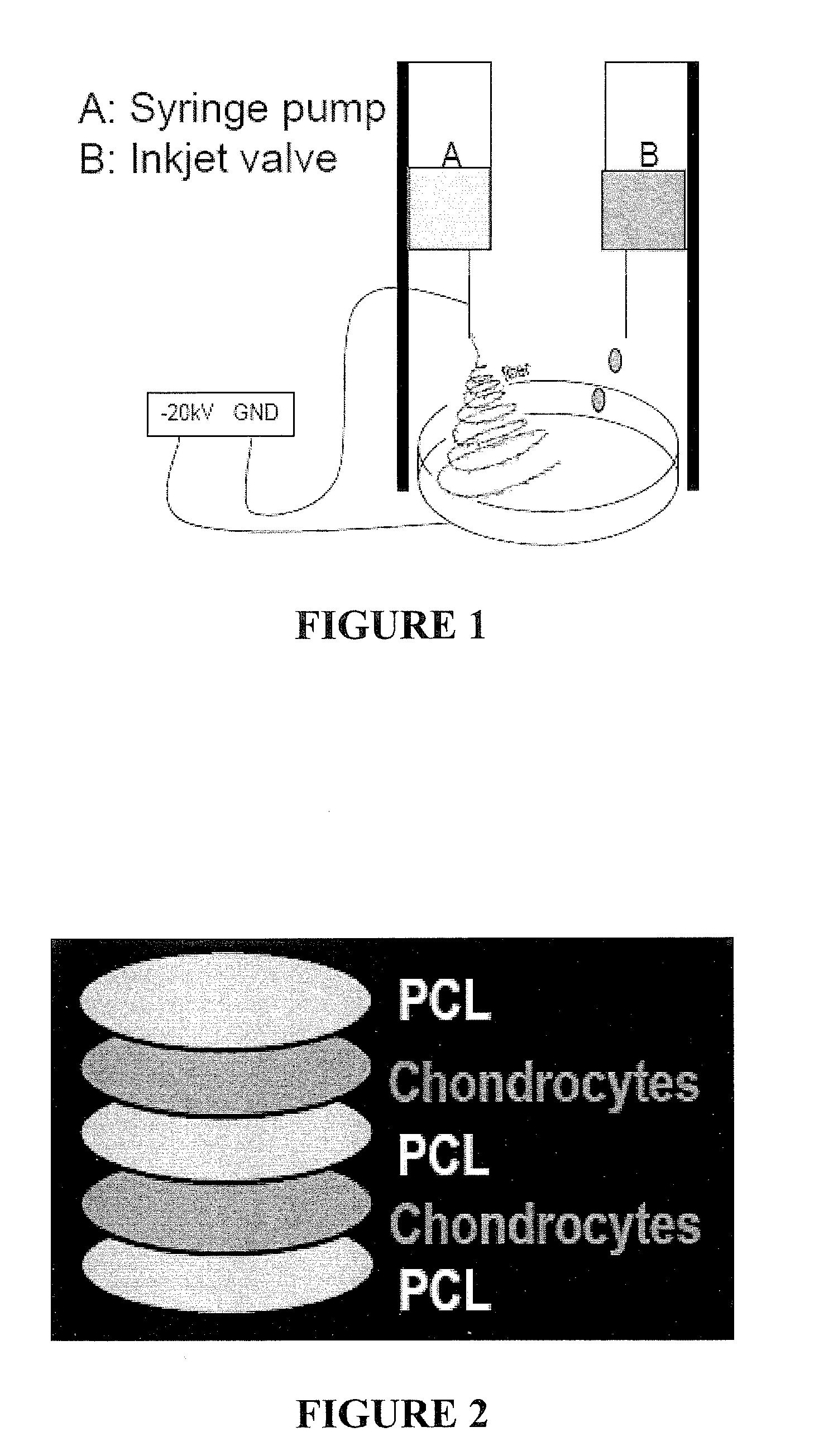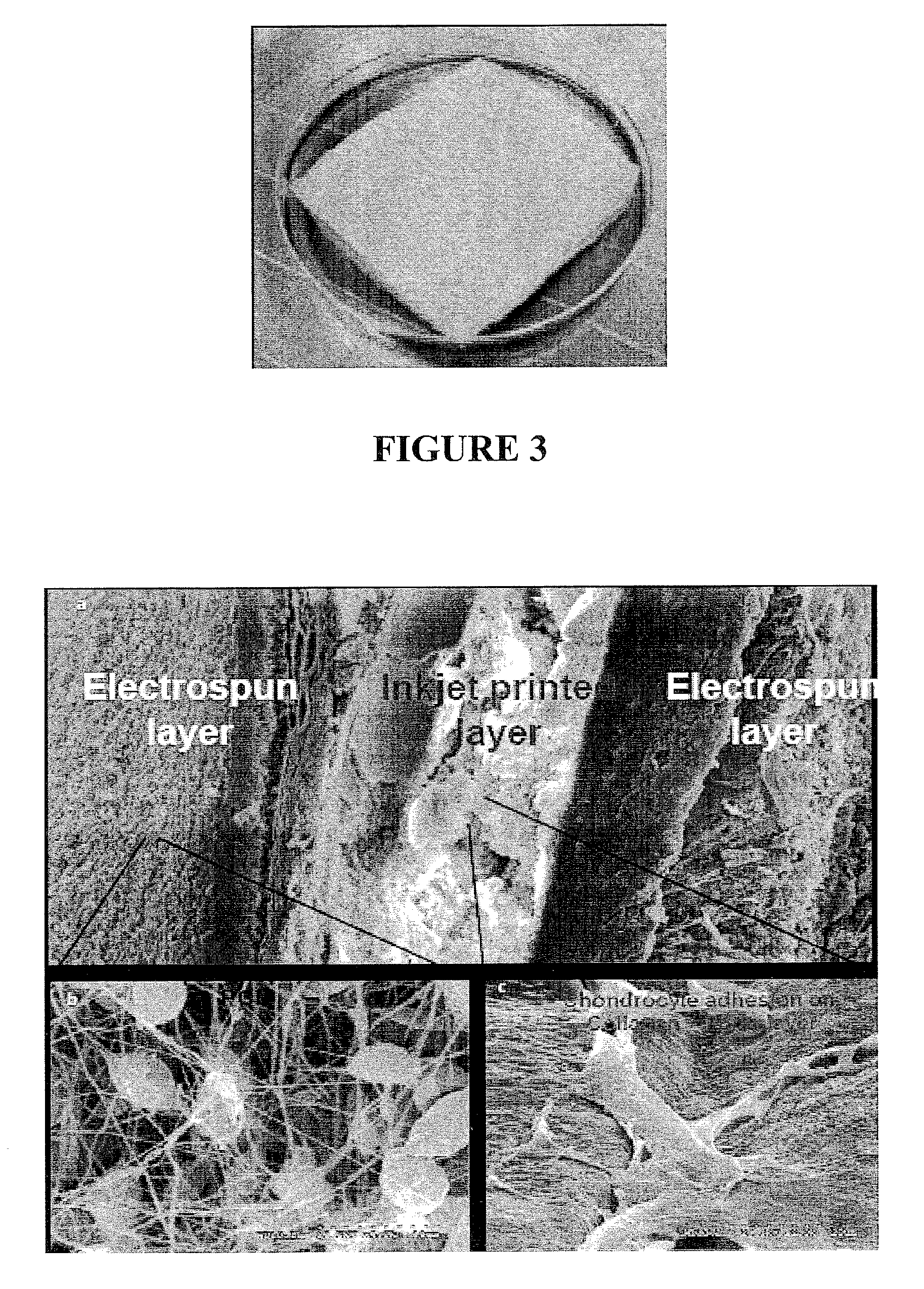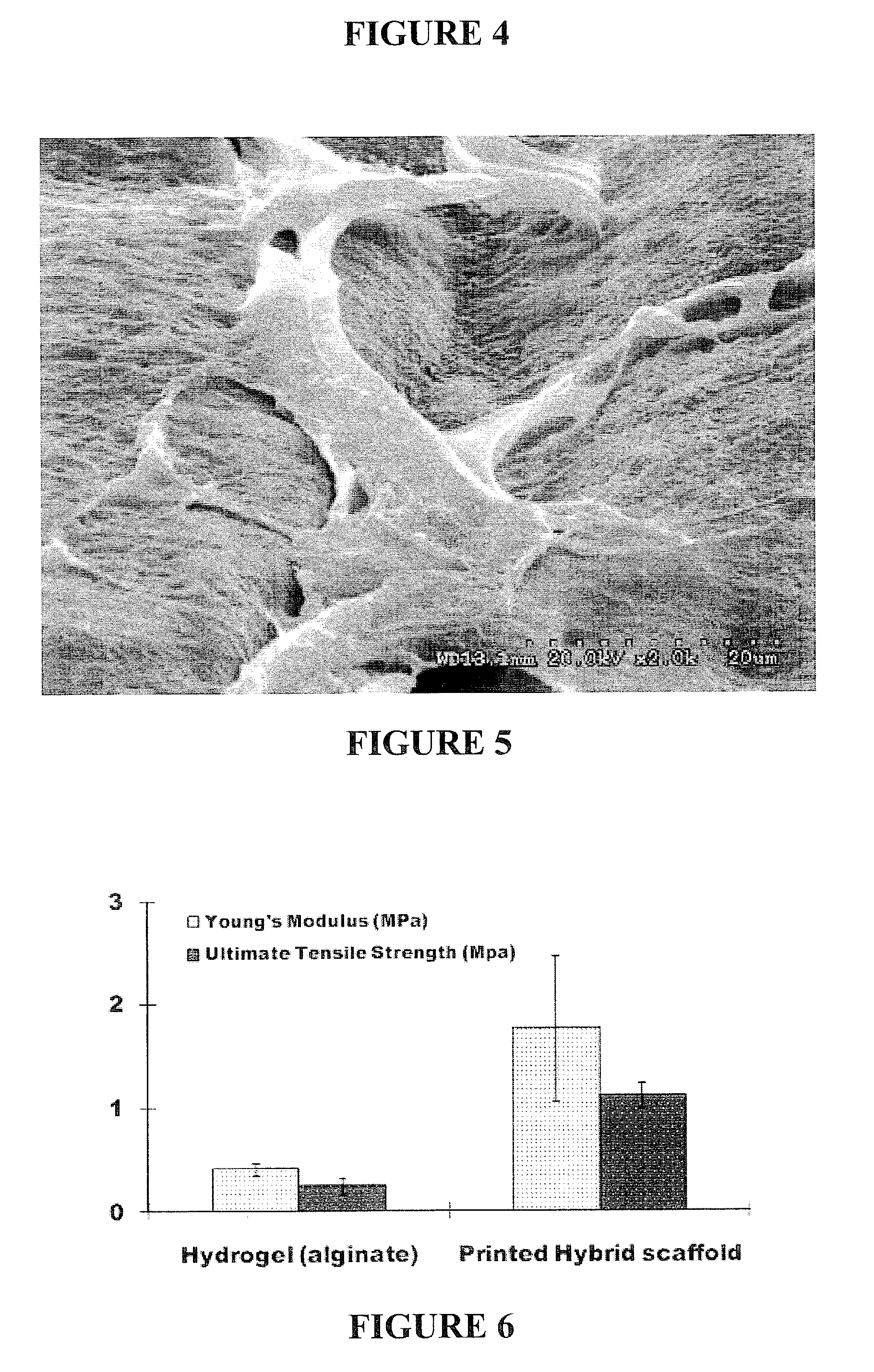Inkjet printing of tissues and cells
a tissue and inkjet printing technology, applied in the field of inkjet printing, can solve the problems of limited hydrogel printing technology, low mechanical strength, and difficulty in handling and in vivo application
- Summary
- Abstract
- Description
- Claims
- Application Information
AI Technical Summary
Benefits of technology
Problems solved by technology
Method used
Image
Examples
example 1
Printing Cartilage Constructs Using a Hybrid Printing Device
[0105]To demonstrate the feasibility of generating structured cartilage constructs using a combination of electrospinning and inkjet printing, a layer-by-layer electrospun PCL and inkjet printed chondrocyte scaffold was created (FIG. 1 and FIG. 2).
[0106]Electrospinning was first used to fabricate the PCL scaffold layer with polymeric nanofibers. Then the inkjet print head laid down rabbit elastic chondrocytes with the fibrin hydrogels on the electro-spun layer. By alternately applying electrospinning and inkjet printing, a 3 D cartilage construct containing multi-layers of cells and scaffolds was generated (FIG. 3). The multi-layered structures of the constructs were observed under SEM examination (FIG. 4). Printed chondrocytes attached to the collagen / elastin within the layer (FIG. 5).
[0107]Mechanical properties, cell viability, and cartilage production of the printed constructs were evaluated. The fabricated scaffolds dem...
example 2
High-Throughput Production of Single Cell Microparticles Using Inkjet Printing
[0135]An insulin-producing beta cell line (TC6) was obtained from American Type Culture Collection (ATCC, Manassas, Va.). The cells were maintained in Dulbecco's Modified Eagles Medium (ATCC) supplemented with heat-inactivated 10% fetal bovine serum (Invitrogen, Carlsbad, Calif.), 100 IU of penicillin (Invitrogen) and 100 μg / ml of streptomycin (Invitrogen) and incubated at 37° C. in a humidified 5% CO2 atmosphere.
[0136]Sodium alginate (MVG; Pronova Biomedical, Oslo, Norway) with an overall gluronic acid (G-block) content of 70% (as reported by the manufacturer) was mixed with PBS at different concentrations (0.5%, 1%, and 2% solution (w / v)) and autoclaved. Beta-TC6 cells were trypsinized, cell pellets collected and re-suspended in sodium alginate solutions at different final cell concentrations (2×106, 6×106, and 12×106 cells / ml).
[0137]HP DeskJet 550C printers were modified using previously described metho...
PUM
| Property | Measurement | Unit |
|---|---|---|
| diameter | aaaaa | aaaaa |
| diameter | aaaaa | aaaaa |
| diameter | aaaaa | aaaaa |
Abstract
Description
Claims
Application Information
 Login to View More
Login to View More - R&D
- Intellectual Property
- Life Sciences
- Materials
- Tech Scout
- Unparalleled Data Quality
- Higher Quality Content
- 60% Fewer Hallucinations
Browse by: Latest US Patents, China's latest patents, Technical Efficacy Thesaurus, Application Domain, Technology Topic, Popular Technical Reports.
© 2025 PatSnap. All rights reserved.Legal|Privacy policy|Modern Slavery Act Transparency Statement|Sitemap|About US| Contact US: help@patsnap.com



